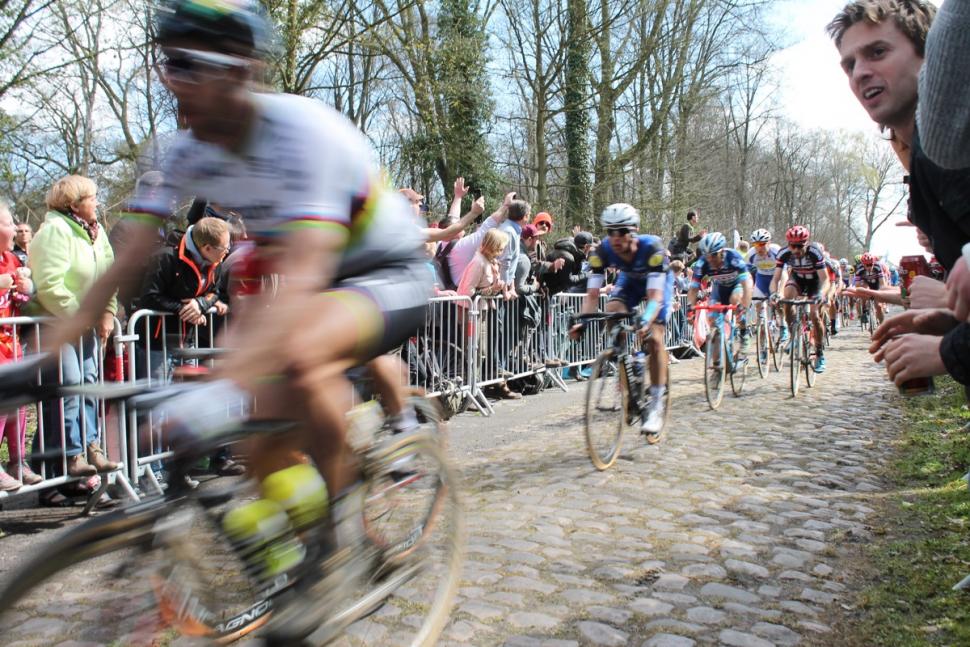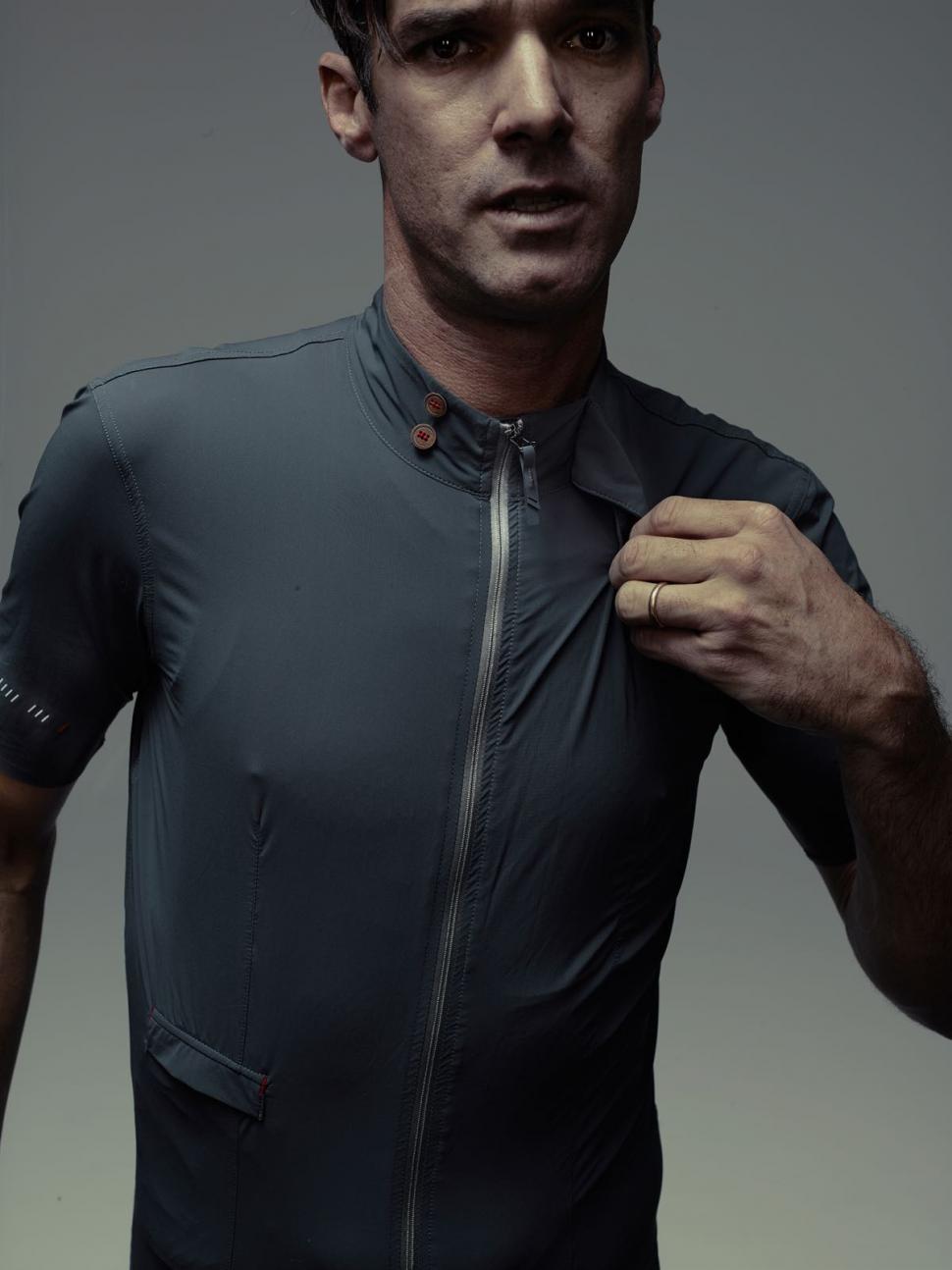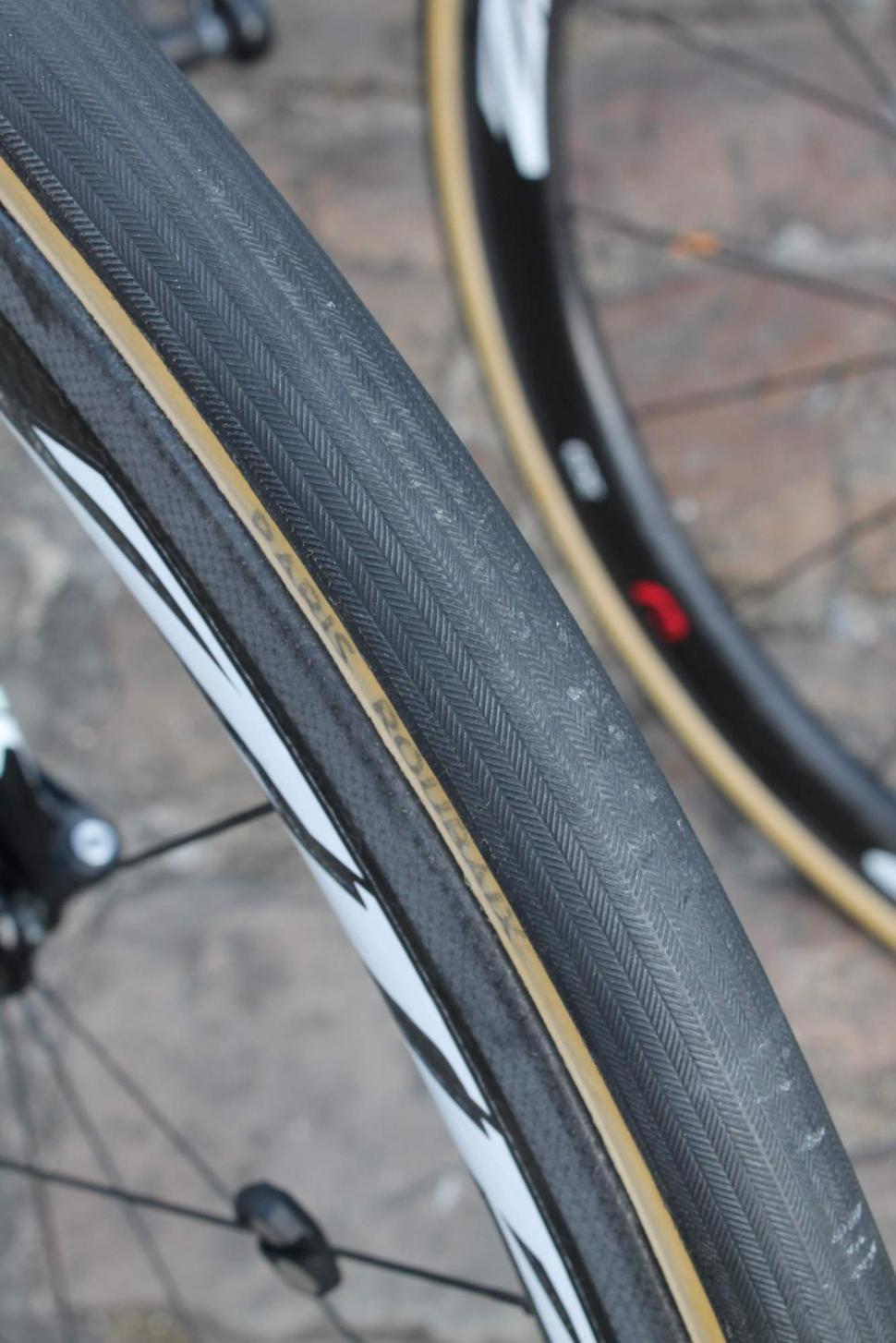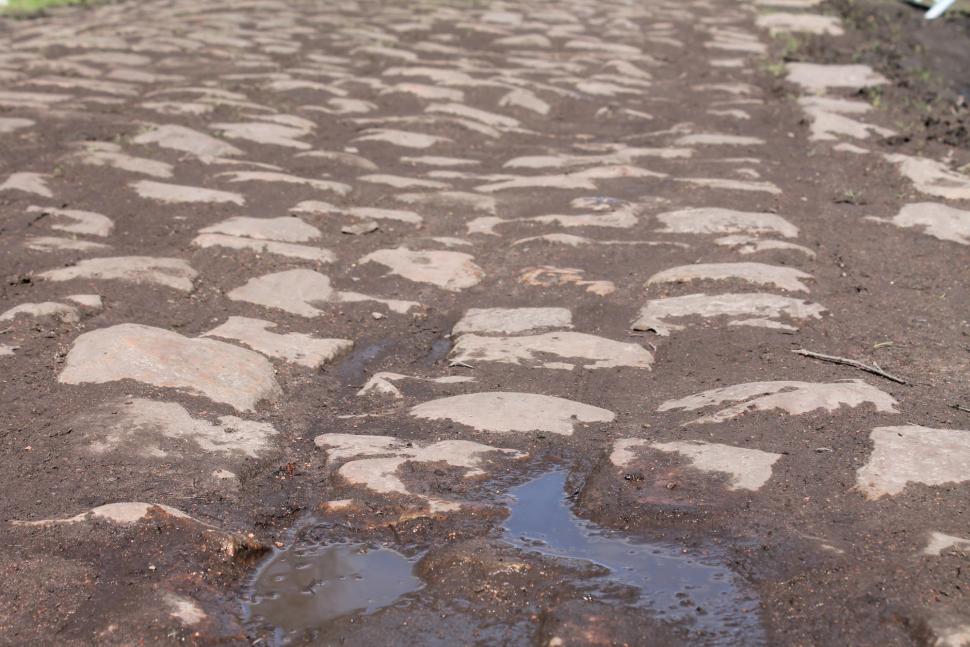- News
- Reviews
- Bikes
- Components
- Bar tape & grips
- Bottom brackets
- Brake & gear cables
- Brake & STI levers
- Brake pads & spares
- Brakes
- Cassettes & freewheels
- Chains
- Chainsets & chainrings
- Derailleurs - front
- Derailleurs - rear
- Forks
- Gear levers & shifters
- Groupsets
- Handlebars & extensions
- Headsets
- Hubs
- Inner tubes
- Pedals
- Quick releases & skewers
- Saddles
- Seatposts
- Stems
- Wheels
- Tyres
- Tubeless valves
- Accessories
- Accessories - misc
- Computer mounts
- Bags
- Bar ends
- Bike bags & cases
- Bottle cages
- Bottles
- Cameras
- Car racks
- Child seats
- Computers
- Glasses
- GPS units
- Helmets
- Lights - front
- Lights - rear
- Lights - sets
- Locks
- Mirrors
- Mudguards
- Racks
- Pumps & CO2 inflators
- Puncture kits
- Reflectives
- Smart watches
- Stands and racks
- Trailers
- Clothing
- Health, fitness and nutrition
- Tools and workshop
- Miscellaneous
- Buyers Guides
- Features
- Forum
- Recommends
- Podcast
feature
 Paris Roubaix 2016 Arenberg 5 - 1.jpg
Paris Roubaix 2016 Arenberg 5 - 1.jpgDavid Millar's guide to surviving (and thriving on) the cobbles
The 2021 edition of Paris-Roubaix takes place this Sunday (3rd October 2021), with the first-ever women's edition on Saturday, and we asked David Millar, head honcho at Chpt3 clothing, for a former pro’s insight into tackling the pavé.
Quick quiz: how many times did David Millar finish Paris-Roubaix during an 18-year pro career that saw him win stages and wear the leader’s jersey in all three Grand Tours?
Answer: once. But there's a bit of a story to it…
“In my final year, 2014, [Paris-Roubaix] was one of my primary objectives – to finish, that is,” says David. “257km, 28 cobbled sections totalling nearly 60km, and two laps of a velodrome [the route and distance can vary slightly from year to year]. 
“I did it all, apart from the last lap. I stood in the middle of that most famous of velodromes, helmet off, knocking back a Fanta, face covered in dirt, feeling a bit of a hero... until my wife told me I had one more lap to do. One more lap? That pretty much summed up my final year – it wasn't exactly a blaze of glory. Still, I love that race.”
So how do you set up your bike for getting to that velodrome as fast as possible and in some degree of comfort?
“Everybody is scared of Roubaix but actually, if you have your bike set up perfectly, you really glide over the cobbles once you’re at a certain speed,” says David.
“The biggest thing is the wheels and the tyres. You need wheels that are strong enough to survive the battering and can also cope with a 27mm tyre. Most riders use FMB or Dugast tyres because those are the only companies that make really trustworthy, fantastic tubulars designed for that purpose. You can run 5-6 bar (73-87 psi) and you’ll be amazed at how much easier that makes the pavé.
“A lot of guys used to run mechanical shifting because the vibrations would trigger the electric, but I think that electric has got so much better now.”
> Check out 11 ways the pros prepare for Paris-Roubaix + see what it's like to ride the Arenberg
What about your riding technique?
“The rule of riding pavé is to relax your grip – you don’t hold on tight. To do that you need a much wider grip – more like a tennis racket grip – so you have a bit more tape on your handlebar to make it bigger, and you strap up your wrists to stop the really small vibrations.
And that will get you to the finish line in A1 condition?
“No. No matter what you put on your hands, they’re going to get rubbed raw because having that relaxed grip means the bar is always vibrating under your hand.”
Oh!
We know of plenty of amateurs who have ridden over the cobbles wearing two pairs of shorts for the extra depth of padding…
“If I was an amateur, I would probably do that. I’m amazed that amateurs can do it because they don’t have the huge setup behind them – the equipment, the mechanics, the team support – that the pros have. If you have the proper set up it can be pretty comfortable.
The weather can be a big factor in any bike race, but even more than usual in Paris-Roubaix where the pavé could be dry and dusty or wet and slippery.
“It’s an odd one when it’s wet in that it’s easier for the skilled guys because a lot of the riders without the bike handling skills are immediately eliminated – they can’t handle it,” says David. “That means the race goes much slower, so it’s physically less demanding but psychologically massively more so because of the technique involved.”
Wet conditions add an extra element to the equipment required too.
Read our guide to 9 of the best wet weather racing jerseys.
“These days you can have waterproof stuff that’s also aero,” says David. “You might have staff strategically placed by the side of the road with kit to hand up to you.
“The big guys just throw outer clothing away after they’ve used it and get it replaced. You don’t worry about handing stuff back to your car, you just throw it to the side of the road so a few lucky spectators might hit jackpot!
“If you’re a spectator, make sure you’re positioned just before the finale because riders will start ditching stuff in the last hour!”
Mat has been in cycling media since 1996, on titles including BikeRadar, Total Bike, Total Mountain Bike, What Mountain Bike and Mountain Biking UK, and he has been editor of 220 Triathlon and Cycling Plus. Mat has been road.cc technical editor for over a decade, testing bikes, fettling the latest kit, and trying out the most up-to-the-minute clothing. He has won his category in Ironman UK 70.3 and finished on the podium in both marathons he has run. Mat is a Cambridge graduate who did a post-grad in magazine journalism, and he is a winner of the Cycling Media Award for Specialist Online Writer. Now over 50, he's riding road and gravel bikes most days for fun and fitness rather than training for competitions.
Latest Comments
- OldRidgeback 2 sec ago
I have a very old MTB (guess what make) that I'll happily leave locked at the train station or shops or whatever. The fairly new Trek MTB or...
- TheBillder 1 hour 34 min ago
Dualling that stretch of the A7 will allow hard-pressed motorists to travel very slightly faster between the rock that is the Sherriffhall...
- BikingBud 1 hour 42 min ago
I refer to being an engineer only to emphasise my consideration of the logical approach that should be applied in the justice system, rather than...
- chrisonabike 3 hours 11 min ago
But is it compatible with elliptical chainrings?
- David9694 3 hours 12 min ago
Parking fail as car left teetering on top of stone wall Oh dear https://www.devonlive.com/news/local-news/parking-fail-car-left-teeterin...
- jaymack 4 hours 31 min ago
We must be related!
- The_Ewan 6 hours 1 min ago
But why worry if a few people do? It's just not a big deal....
- Tom_77 7 hours 5 min ago
Tempted to get him a sweary birthday cake like in The Thick Of It....
- Bigtwin 7 hours 33 min ago
Didn't happen did it? They came into my shop a couple of years back and said it was "on the way", but never heard anything more.
- Steve K 8 hours 6 min ago
Very parochially, I've still not forgiven Pearson's for abandoning their roots by leaving Sutton.




Add new comment
13 comments
I've done the long sportive three times on my Ti Siena with Thomson carbon bars, bound to the diameter of a tennis racket. I rode the first on Hed Belgiums and broke a spoke, and the rest on traditional Open Pros. The bike was fine, though it makes noises I've never heard before. I daren't ride it on my Factor 02, though I'm sure David Millar would tell me that's what its for.
It's far from a comfortable ride, and the pictures rarely do the pave justice. I refuse to call them cobbles. They are chunks of granite pressed into the clay topsoil. When heavy machinery drives over them it drives them down, unevenly in the tyre tracks. So if you deviate from the apex, it's like riding over a pile of twisted bricks. It's hard to maintain a decent speed on the rough pave sections which are categorised and differ each year apart from the Arenberg and the Carrefour.
You get a top tube sticker to list the sections, but fortunately at 55 I can barely make the categories out....it's better not to know. I've tried powering over them in a high gear which seems to work until you're fatigued, and then you start to look for the smooth edges.
I shower in Bernard Hainault's cubicle afterwards (each is named after a winner), remembering his comment about it being a pointless ride. Pointless, but beautiful. Can't wait for tomorrow.
To those of you harping on about how good you are and how you've never buggered up your hands whilst doing your sportive at half the speed of the race; have a look at Dimension Data's twitter feed. Specifically the image of Jay Robert Thomson's hands...
Dave may be right.
He may be wrong.
But I doubt he cares as he got his new clothing range mentioned.....
Should have called it "l04dof0ldc0bbl3rs"
Yeah Millar, that effing lightweight. Third UK rider to take wins in all major tours? Bet you he did that on 23c tyres too which just goes to show what a nob he was. I have 25c tyres so that makes me a better cyclist you know. No real talent, always looked like shit on a bike. Don't know why he bothered really. Never spoke up for the riders, gives terrible commentary. Pffftttt....
Think Davy boy is a bit out of touch, Veloflex make one of the best 27mm tubulars, funnily enough it's called the vlaanderen. 300g of tubular goodness, it's an absolutely fantastic tyre with an oh so cushy ride without losing out in the speed stakes. I have one fitted to the rear Bora50 (25mm Conti comp on the front). As a big guy I don't think I would want to go smaller at the back in future even if I shed a few more kg.
Now that the pros have suspension at the back as well as at the front end plus if you use a carbon bar that is maybe a little bit wider you really shouldn't be needing to double wrap. I have fairly small hands so a std bar is fine for me, a 35mm bar with a decent tape and a good set up should suffice.
Has anyone heard of a pro getting 'raw' hands, surely isn't that why you want to use a good pair of gloves anyway if not for the protection should you come off which is far more likely to fuck your race up than not wearing a noddy hat in an off?
And your tyres compare performance wise and reliability wise to the tyres most of the pros use? I'm sure they'd all be glad of you pointing them in the right direction. And yep. For various reasons some pros ride with gloves, and some without. Pros tend to be very lean, which means they have a lot less padding on their hands, but as you'll well know, no gloves is more aero than gloves. And nice try with the noddy hat. Just wondering if noddy hats were made of 1.5 mm thick suede whether you'd grant them with more protective capacity than 60mm of plastic and polystyrene. Probably not, but suddenly on the hands they have a protective effect? Noddy indeed.
Is it time for a helmet debate?
You're comparing 2 different types of PPE. Protecting your hands is largely protecting them from abrasion, so 1.5mm suede can do an excellent job at that despite probably not protecting against bone-smashing collisions. Heads, however require more advanced cushioning as the big problem is if your brain is "sloshed" against the inside of your skull - that's what causes the nasty brain injuries. Helmets can easily protect against abrasion but the jury is out on whether they provide adequate brain protection in a typical crash.
Apples and oranges.
Don't think you're really qualified to give advice on this Dave, and making the assumption that the amatuers are riding 23mm tyres at 120psi is insulting to those who have done the Challenge.
Most would have done their research, or copied what the pros ride, I know I would have.
Please get Magnus Backstedt to give some proper advice and leave Dave to give advice on what he does know about
Is this a paid advertising article?
“No. No matter what you put on your hands, they’re going to get rubbed raw because having that relaxed grip means the bar is always vibrating under your hand.”
I'm sorry Mr Miller but you are wrong. I've done the Challenge ride five years on trot over all the cobble sections the pros ride and one year repeated the first 10 or 15 sections including the Arenburg and never had my hands rubbed raw. That includes no gloves, fingerless, and two different types of thin thermal spring full length. Unless you are saying your hands were rubbed on the first 100km road section?
Wrist only hurt it you allow them to drop and introduce an upperwards bend especially over the cobbles.
Just a guess here but I bet you weren't going half as fast as the pros and you did about 100km less than the pros...
It makes a slight difference.
Says amateur cyclist with zero palmarès.
Well that is what worked for you. I'm sure he's not telling you you're wrong. Also at a slightly lesser speed it may have a different effect, perhaps? And I can tell you you are wrong. My wrists hurt after 15 km of pave, whether they are dropped or not. But that's just my wrists, not yours.